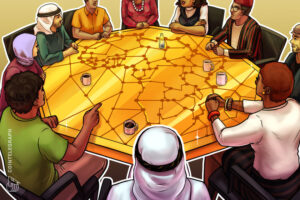In a world where everything is moving further and further into digital, the metaverse is part of a wider transformation of our digital lives. It is a pure online world where people can choose to retreat to game, work and communicate. It is considered bymany as the latest evolution of interpersonal communications. In another way, the metaverse could even be thought of as the next generation of the internet. As the next step in advancement of the web and social media, it brings us progressively closer to a fully simulated virtual reality through disruptive transformation, says James Morris-Manuel, EMEA managing director of Matterport.
However, the metaverse requires a digitised copy of the real world as an entry point, in order to provide fully connected, immersive and engaging 3D experiences. Extended reality technologies including virtual reality (VR) and augmented reality (AR) alongside digital twins virtual replicas of the physical world are perfectly positioned to create that environment.
As conversations around the metaverse intensify, many businesses are now exploring how they can build on the metaverse’s foundational elements to bring greater opportunities for consumers and businesses alike. By deploying digital twins, organisations can import dimensionally accurate real-life spaces into the virtual mirror world that the metaverse offers. There is a lot of potential unrealised value in it too; EY recently estimated that digital twins will have a projected market size of $48bn (€41.97bn) by 2026, demonstrating its wider economic potential.
The market opportunity of the metaverse
The potential for digital twins and the metaverse is considerable. The metaverse could fundamentally change the way that businesses and consumers experience, interact with, and analyse the physical environment of the built world. Digital twins bring online a mass of analog data that can be searched, modelled, and ultimately used to derive value from physical spaces. There is significant benefit in accruing this data and applying the insights generated from it to improve both businesses and society at large. This data and the ability to source it, search it and use it will open a vast array of future opportunities and evolve infinite applications.

Successful businesses will be those who ensure digital twins are part of their strategic planning, both to offer new experiences to consumers in the growth of the metaverse and to optimise their own productivity and operations. From the evolving worlds of property ownership or virtual gaming experiences, through to the AI technology that will underpin it all, digital twins are helping to build the mirror world, a digital version of everything we see around us, autonomously.
The business impact of digital twins across industries
Beyond the metaverse, there is also the wider business case for digital twin technology.Using digital twins, businesses can create dimensionally accurate replicas of physical locations, which operate as a separate entity as a virtual layer. With increased demand for convenient, engaging and digital-first experiences, the use of digital twin technology has accelerated and is spreading exponentially across multiple industries. The benefits of the technology are recognised in a wide range of sectors from engineering, construction, architecture, travel and hospitality, through to insurance, and facilities.
One example is the retail sector. Even before the onset of the pandemic, traditional brick-and-mortar stores were under pressure to stay competitive in a market increasingly dominated by eCommerce. Using digital twin technology, retailers can now remodel and continuously develop hundreds of stores more rapidly, and remotely. Digital twin technology also enables retailers to provide more immersive experiences to improve customer engagement.
In the construction industry, engineers can virtually visit locations to plan any challenging or potentially invasive construction work remotely, accelerating construction schedules through faster project management and decision making. Together, the business impact is both sizable and lucrative for all involved parties.
The road to the metaverse
The process towards building the metaverse will take time and its final conceptualisation could take any number of forms. To be realised, it will involve digital twin technology that combines computing technology, data, and computational photography. And this technology is becoming more widely accessible, via iPhone, 360 degree or LIDAR cameras.

A physical space can be easily and quickly captured and turned into an accurate and immersive digital replica using 3D spatial data technology cameras to blend the structural integrity of a space with 4K HD photographic realism. By incorporating Artificial Intelligence (AI) into the 3D reconstruction process, the process can be fully automated to enable businesses to scale with equal precision to millions of buildings and spaces of any kind, anywhere in the world.
At its core, the scale of a potential metaverse is a more interactive, richly detailed evolution of the world. By digitising the built world using digital twins, businesses can unlock value and accessibility for every space on the planet, enabling the emergence of a potentially limitless number of future metaverse services. Powered by ever-evolving technology innovation, alongside insight from the sheer magnitude of analog data available in the physical built environment, digital twins are just scratching the surface of arguably the opportunity of the next decade.
The author is James Morris-Manuel, EMEA managing director of Matterport.
Comment on this article below or via Twitter: @IoTNow_OR @jcIoTnow
- 3d
- 4k
- accessibility
- AI
- All
- applications
- AR
- architecture
- around
- article
- artificial intelligence
- Artificial intelligence (AI)
- Augmented Reality
- augmented reality (ar)
- Automated
- build
- Building
- business
- business impact
- businesses
- cameras
- change
- closer
- Communications
- computing
- construction
- Consumers
- conversations
- Customer Engagement
- data
- Decision Making
- Demand
- develop
- digital
- digital twin
- Digital twins
- Director
- ecommerce
- Economic
- Engineering
- Engineers
- Environment
- evolution
- experience
- Experiences
- extended reality
- EY
- For Consumers
- future
- game
- gaming
- Growth
- hospitality
- How
- HTTPS
- Hundreds
- immersive
- Impact
- Including
- industries
- industry
- Innovation
- insights
- insurance
- Intelligence
- interactive
- Internet
- involved
- iPhone
- IT
- large
- latest
- lidar
- Making
- management
- Market
- Media
- Metaverse
- mirror
- offer
- Offers
- online
- open
- Operations
- opportunities
- Opportunity
- order
- Organisations
- pandemic
- People
- photography
- physical
- planet
- planning
- Precision
- pressure
- productivity
- project
- project management
- property
- range
- real world
- Reality
- retail
- retailers
- Scale
- Search
- Sectors
- Services
- Size
- Social
- social media
- Society
- Space
- Spatial
- stay
- stores
- Strategic
- Surface
- Technologies
- Technology
- The Metaverse
- the world
- time
- Transformation
- travel
- us
- value
- Virtual
- Virtual reality
- virtual world
- vr
- web
- WHO
- Work
- world


